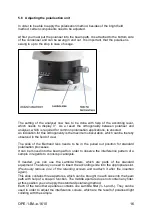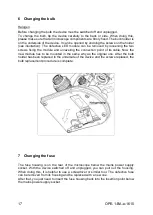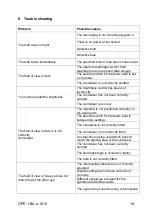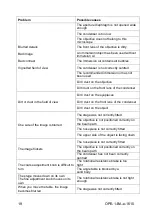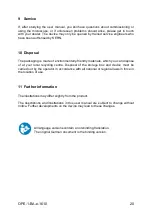
OPE-1-BA-e-1610
14
5.4 Adjusting the magnification
After prefocussing has been carried out using the objective with the lowest
magnification
(see section 5.2)
, you can then adjust the overall magnification using
the nosepiece, as necessary. By turning the nosepiece you can bring any one of the
four other objectives into the beam path.
When adjusting the nosepiece, you must take the following points into account:
- The required objective must be properly locked in
place at all times.
- The nosepiece should not be rotated by holding
individual objectives, you should use the silver
ring above the objectives
(see illustration)
.
- When rotating the nosepiece you must always make sure that the objective which
is about to be positioned in the beam path does not touch the object holder. This
can lead to significant damage to the objective lens.
We recommend that you always check from the side to make sure that there is
sufficient leeway. If this should not be the case, the specimen stage must be
lowered accordingly.
If you have focussed the object to be observed for a specific magnification, then if
you select the objective with the next greatest magnification, then the object will be
slightly out of focus. Use the fine adjustment knob to make a slight adjustment and
restore the focus.

















